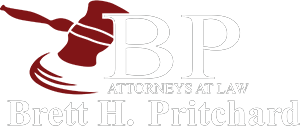Updated on August 23, 2022
Entering someone else’s property without permission to do so can lead to a criminal charge of trespassing, which is a serious charge that you should take seriously. A conviction can lead to jail time, fines, and social consequences that are difficult to overcome. If you are facing a trespassing charge, an experienced Temple criminal defense attorney can help.
Reaching the Level of Criminal Trespassing
In the State of Texas, your actions are considered trespassing if the following apply:
You entered someone else's property without permission to do so, or you remained on that property after being told to leave.
You did not have consent to be on the property in question.
The owner of the property in question gave proper notice that entry was not allowed.
Many trespass charges hinge on whether or not the owner of the property gave proper notice. Trespass cases are often complicated, but an experienced Temple criminal defense attorney can help.
Giving Proper Notice
Trespassing cases tend to hinge on whether or not the property owner or manager took the steps necessary to provide proper notice that entry was forbidden. There are five types of notification that will suffice:
Oral or Written Notification
The property owner or manager can ask someone on his or her property to leave directly via either a verbal warning or a written message.
For example, if a landlord notices that a tenant's guest is staying longer than the lease allows, he or she can give the tenant a written warning instructing the guest to depart the premises. Further, a property owner can simply walk up to someone on his or her property (whether invited or not) and tell them to leave.
Fencing or Another Kind of Enclosure
When a property owner encloses his or her property with a fence (or anything else), would-be visitors should recognize that this means entrance is forbidden (without specific permission to enter). Examples include fenced-in yards and fenced-in farmland.
No Trespassing Signs
When a property owner or manager posts a No Trespassing sign (or multiple signs) clearly and visibly on the property, it means do not enter without permission.
Cropland
When land in Texas is obviously being used to grow or harvest crops, this serves as an adequate warning that entry is not allowed.
Purple Paint Marks
Purple paint marks can also serve as warnings regarding trespassing. When readily visible purple paint marks are made on trees or posts that are no more than 100 feet apart on property that is forested and no more than 1,000 feet apart on non-forested property, it amounts to fair warning.
Determining Charges
It is a Class B Misdemeanor to trespass on someone else’s property, and a conviction carries the maximum sentence of $2,000 in fines and up to 6 months in jail.
There are instances, however, when the charge can be elevated. If the accused is in possession of a deadly weapon, for example, the charge is a Class A misdemeanor, and such a conviction carries a maximum sentence of up to $4,000 in fines and up to one year in jail.
Do Not Wait to Consult with an Experienced Temple Criminal Defense Attorney
If you are facing a trespassing charge, attorney Brett Pritchard at The Law Office of Brett H. Pritchard in Temple, Texas, is on your side and standing by to help. Your case is important, so please do not hesitate to contact us online or call us at (254) 781-4222 today.







